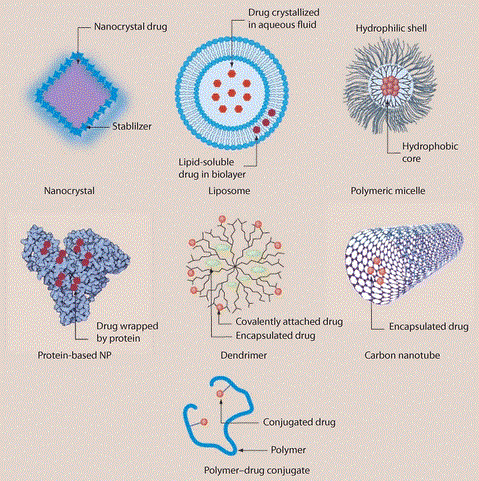For Nanotech Drug Delivery, Size Doesn’t Matter, Shape Does
Tuesday, March 29, 2011 at 4:14
source : http://www.scientificamerican.com/article.cfm?id=size-shape-matter-nanotech-drug
| August 7, 2008 |
As nanotechnology to ferry drugs to their destinations is tested in both the laboratory and in clinical trials, scientists have made a surprising discovery about the kinds of nanoparticles that might be most effective for eventually transporting a number of different cancer-fighting therapies throughout the body.
The conventional wisdom is that the smaller, the better. But that may not be true, according to a team of scientists led by University of North Carolina at Chapel Hill (U.N.C.) chemistry professor Joseph DeSimone. DeSimone and his colleagues have shown that the shape of these microscopic drug carriers is much more important than size and can even mean the difference between whether a drug penetrates target cells effectively or ends up as a target itself, only to be destroyed by the immune system.
Although logic would dictate that the smaller the particle, the more likely it is to infiltrate a cellular membrane, the researchers found that rodlike particles are able to get in faster than other shapes because of how the immune system responds to them. “Clearly,” DeSimone says, “there’s a role here between size and shape that has not been established before.”
The research, published this week in the Proceedings of the National Academy of Sciences USA (PNAS), indicates that rod-shaped particles (150 nanometers in diameter by 450 nanometers long) penetrated human cells about four times faster and traveled farther into the cells than particles with more balanced dimensions (such as 200 nanometers by 200 nanometers). One nanometer equals 40 billionths of an inch.
“If we go back 10 years and ask what is the most important parameter [to developing a therapeutic particle], people would immediately think of the particle’s size and then its surface chemistry,” says University of California, Santa Barbara, chemical engineering professor Samir Mitragotri, who develops microscopic particles of different shapes and tests their ability to deliver drugs, but was not associated with DeSimone’s study. “Now people are realizing that shape can have an impact, too.”
One of the hopes is that once nanotechnology is proved safe and effective as a drug delivery system, highly concentrated nanoparticles carrying drugs could be injected directly into the body where they are needed most and use their shape to get to work quickly. Being able to make particles in a variety of shapes out of any organic material could, for example, allow a person suffering from rheumatoid arthritis or Crohn’s disease to get their medication in a single injection rather than via a two-hour intravenous infusion of Remicade. “You want to deliver it where you want it, when you want it, without wasting it.” DeSimone says.
Nanoparticles shaped a particular way might also keep drugs out of organs they are likely to damage, improving the safety of certain drugs. “We have demonstrated that we have low uptake in the kidneys of animals of our 200-nanometer diameter cylindrical particles that are 200 nanometers in height,” DeSimone says, adding that it’s not yet clear exactly why shape affects uptake in kidneys. Researchers are hoping that other shapes, such a flexible, wormlike nanoparticle that is 80 nanometers in diameter and 500 nanometers long, will perform even better.
So why do particular shapes work better? For one thing, rod or worm-shaped particles are harder than spherical particles for the body’s immune system to reject. “Macrophages, the cells that engulf foreign particles and take them out of circulation, like to eat objects that don’t require them to expand a lot,” says Mitragotri. “If macrophages come at one of these wormlike particles from the side, they have to expand a lot to engulf them, and they don’t like that.” It’s much less likely that a macrophage would latch onto the pointed end of an elongated particle because the ends are such a small proportion of the particle’s total surface area, he adds.


